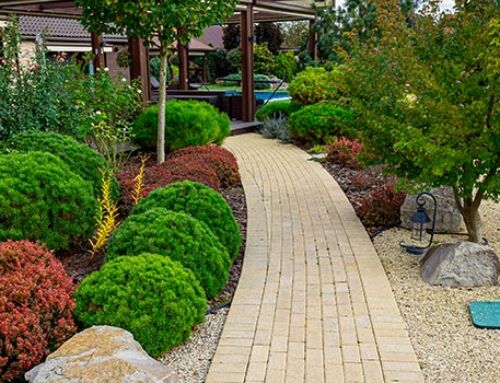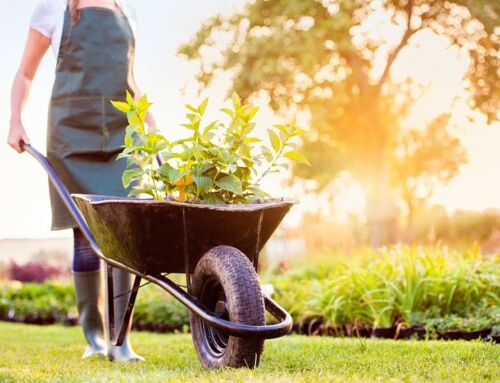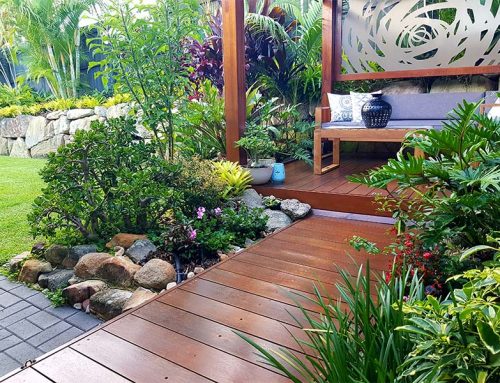
Planning a new landscape construction project?
As exciting as landscaping is, it doesn’t come without uncertainty, plenty of planning and a ton of unanswered questions.
Whether it’s a sleek contemporary upgrade, a bustling commercial job, or a tranquil garden transformation, the landscaping project doesn’t have to be confusing or overwhelming.
When you know what to expect, it’s easy to get back to enjoying your new space and stressing less about red tape, unexpected costs or unforeseen delays.
Ready to kickstart a new landscaping construction project?
Here’s what you need to know.
Before you go… check out our most popular new resources:
1. Initial Consultation and Site Analysis
The first step in the new construction landscaping process is the initial consultation between the client, the landscape architect or designer, and other relevant stakeholders. During this phase, the client’s vision, goals, and budget are discussed. Additionally, the site’s characteristics, such as topography, soil quality, drainage patterns, and existing vegetation, are carefully analysed. This information forms the foundation for the entire design process.
2. Conceptual Design
Based on the insights gained from the site analysis and initial consultation, the landscape architect or designer creates a conceptual design. This design includes the layout of hardscape elements (such as pathways, patios, and decks), softscape elements (like trees, shrubs, and flowers), water features, outdoor amenities, and other design features. The goal is to translate the client’s preferences and the site’s attributes into a visual representation of the future landscape.
3. Design Development
After receiving feedback from the client and making any necessary adjustments to the conceptual design, the landscape professional proceeds to the design development phase. This involves refining the design details, and selecting specific plant species, materials, colours, and textures. The goal is to create a comprehensive plan that guides the construction process.
4. Permitting and Approvals
In Brisbane, certain landscaping projects may require permits or approvals from local authorities. This step involves submitting the landscape design plans to the relevant regulatory bodies for review. This process ensures that the proposed landscaping complies with local zoning regulations, environmental guidelines, and any other applicable rules.
5. Construction Documentation
Once the design is finalised and the necessary approvals are obtained, the landscape architect or designer develops detailed construction documentation. These documents include precise measurements, material specifications, planting layouts, and other technical information required for the implementation of the design.
6. Implementation
The implementation phase involves transforming the approved design into reality. This includes grading the land, installing hardscape elements like walkways and retaining walls, planting trees and plants, and setting up irrigation systems. Experienced landscape contractors work in collaboration with the design team to ensure that the construction aligns with the design intent.
7. Project Management
Effective project management is crucial to ensure the construction process runs smoothly. Timelines, budgets, and quality control are closely monitored to ensure that the project stays on track and meets the client’s expectations.
8. Planting and Softscape Installation
Planting and installing softscape elements, such as shrubs, flowers, and ground cover, is a critical step in adding the finishing touches to the landscape. The selection of plant species is often influenced by the local climate, soil conditions, and the desired aesthetic.
9. Finishing Touches
The finishing touches can include adding outdoor furniture, lighting fixtures, decorative elements, and any additional features that enhance the functionality and visual appeal of the landscape.
10. Final Walkthrough and Handover
Before officially completing the project, a final walkthrough is conducted with the client to ensure that every aspect of the new construction landscaping meets their expectations. Any necessary adjustments or minor improvements are made during this phase. Once both the client and the design team are satisfied, the project is handed over to the client.
New Construction Landscaping: Sustainable Practices
In addition to the essential steps outlined in the previous section, incorporating sustainable practices into the new construction landscaping process is becoming increasingly important.
As the world shifts towards more eco-conscious practices, the landscaping industry is no exception. Brisbane’s unique environment and climate provide opportunities for innovative and environmentally friendly landscaping solutions.
Let’s explore how sustainable practices are integrated into the landscaping process:
1. Native Plant Selection
One of the fundamental principles of sustainable landscaping is using native plants. Native species are adapted to the local climate, soil conditions, and wildlife, making them more resilient and requiring less water and maintenance once established. Incorporating a variety of native trees, shrubs, and groundcovers not only reduces the need for irrigation but also supports the local ecosystem by providing habitat and food for native wildlife.
2. Efficient Irrigation
Brisbane’s subtropical climate often experiences dry spells, making efficient irrigation systems a vital component of sustainable landscaping. Drip irrigation, for instance, delivers water directly to the plant roots, minimising water wastage due to evaporation and runoff. Smart irrigation technologies can also adjust watering schedules based on weather conditions and soil moisture levels, further conserving water.
3. Rainwater Harvesting
Considering Brisbane’s occasional heavy rainfall, rainwater harvesting systems can be integrated into the landscape design to collect and store rainwater for later use. This harvested water can be utilised for irrigation, reducing the reliance on potable water sources for landscaping needs.
4. Permeable Surfaces
Incorporating permeable surfaces such as permeable pavers, gravel, or porous asphalt helps manage stormwater runoff. These surfaces allow water to infiltrate the ground, replenishing groundwater levels and reducing the strain on municipal drainage systems.
5. Efficient Lighting
When designing outdoor spaces, energy-efficient lighting options can contribute to sustainability. LED lighting consumes less energy, has a longer lifespan, and can be strategically placed to minimise light pollution while ensuring safety and ambience.
6. Composting and Mulching
Incorporating composting practices and using organic mulch in landscaping beds contribute to soil health and moisture retention. Mulch helps regulate soil temperature, suppress weed growth, and reduce the need for frequent watering.
7. Hardscape Materials
Selecting sustainable hardscape materials can significantly reduce the environmental impact of a landscaping project. Opting for locally sourced and recycled materials for pathways, patios, and other hardscape features reduces transportation emissions and supports the local economy.
8. Biodiversity Enhancement
Sustainable landscaping also involves creating spaces that encourage biodiversity. Design elements such as bird baths, insect hotels, and butterfly gardens attract various species, promoting a healthier ecosystem within the urban environment.
9. Maintenance Planning
Considering long-term maintenance is a crucial aspect of sustainability. Designing landscapes with low-maintenance plants and features not only reduces ongoing labour and resource costs but also ensures the landscape’s longevity.
10. Education and Awareness
Engaging the community and educating clients about sustainable landscaping practices can have a positive ripple effect. By showcasing the benefits of sustainable landscaping, more people may be inspired to adopt similar practices in their own spaces.
Start Your Next Landscaping Project with Confidence
The new construction landscaping process goes beyond aesthetics and functionality; it has evolved to include a strong focus on sustainability.
From native plant selection to efficient irrigation systems and innovative stormwater management techniques, each step of the process can be designed with the environment in mind.
As your outdoor space continues to evolve and grow, prioritising sustainable landscaping practices is not only a responsible choice but also a way to create a durable and long-lasting space that grows with you and your family.
Take the Plunge with Brizscapes
We understand you’re comparing your options (hey, we’d do the same), so why not put Brizscapes to the test?
Our highly experienced and award-winning team are on standby to help you achieve your dream landscape design and build without putting your space at risk or breaking the bank.
We’re well known throughout Queensland and the Brisbane community for having an honest and reliable team that gets the job done with minimal fuss, so reach out today on 0439 532 152 or request a 100% obligation-free quote online today!




